Over the last decade, there has been a major shift in reading assessments. Students used to be assessed only on multiple choice questions. However, now they are required to write constructed response reading questions.
Answering constructed response questions requires a different set of skills than those that are needed for multiple choice questions and can be a challenging task for students, especially for those who struggle with reading comprehension or writing skills. This post shares strategies to help support students with constructed response tasks and questions.
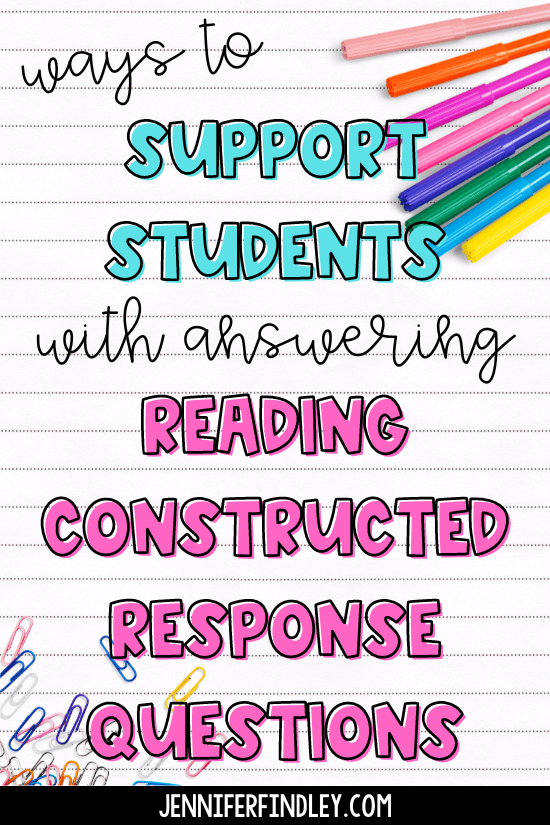
What are Constructed Response Questions?
Before diving into the tips and strategies, first let’s define and look at examples of constructed response questions in reading.
Constructed response questions are types of questions that require a written (or spoken) response, as opposed to multiple choice or true/false questions. These questions are often used in assessments and standardized tests to evaluate a student’s understanding or ability to apply knowledge.
Examples of constructed response questions can include the following:
- Fill-in-the-blank questions
- Short answer questions
- Essay questions
This post will focus more on sharing strategies and tips for answering short answer constructed response questions such as:
- Identify the theme of the story and how the author supports the theme throughout the story.
- What motivated the character to take action? Include text evidence in your response.
- How does the setting impact the plot? Provide specific examples and details from the story to support your answer.
I have found that these types of questions are difficult for students for many reasons. Here are a few:
- Having choices provides a scaffold for students who may not understand what the question is asking. When those choices are taken away, the cognitive demand is all on the student to fully understand what the question is asking.
- Organizing an answer in a logical way can be a challenge for many students.
- Finding, rewording, and explaining text evidence in a constructed response question can be tricky.
- Spelling and writing conventions can make it difficult for students to show what they know about a text or story.
Now, let’s look at some strategies for supporting your students with constructed response questions in the area of reading (these also work in other areas as well).
Strategy #1- Explicitly teach and model writing constructed responses.
Modeling and providing examples is so important when helping students understand how to answer constructed response reading questions correctly.
When you are explicitly teaching how to answer constructed response questions, model each part that is needed in a quality response. You could model how you would answer one of the questions yourself, provide examples from past student work, use released examples from state tests, use sample answers from published materials, or even co-create the response with students as an exemplary model.
Modeling and explicitly teaching how to answer constructed response questions will not only show your students what an effective answer looks like but will also make them feel more confident when answering these questions themselves.
Strategy #2 – Teach students an acronym to help them remember the parts of a quality response.
Acronyms are a great instructional tool to help students remember the steps or process of a task. Using an acronym to help students keep track of the steps or parts of a quality constructed response task will help them feel more confident and master the skill.
Here are some example constructed response acronyms:
RAP – Restate the question. Answer the question. Prove your answer.
ACE – Answer the question. Cite text evidence. Explain the text evidence you cited.
RACE – Restate the question. Answer the question. Cite text evidence. Explain the text evidence you cited.
The RACE strategy is my personal favorite to use. Click here to read a detailed post about this strategy with tips and free resources for teaching each step.
Strategy #3 – Have the students color code the different parts of their response.
This next strategy works well if you don’t want to use an acronym (to keep the writing responses from being formulaic) but it also works well with an acronym.
Have students use a different colored pencil (or pen – they would love that!) for each different part of a quality response:
- Answer in a complete sentence
- Evidence from the text
- Explanation
This color-coding strategy is perfect for enhancing students’ written responses and making them higher quality while also providing engaging practice (and practice is so important with this skill).
Click here to download the “Color Code Your Answers” printable. Print the posters at 80% or two to a page for interactive notebooks.
Strategy #4- Have students verbally rehearse their responses with partners before writing.
One of the strategies that really helps my students is having them verbally rehearse what they will write with their partners before they start writing. This helps them get their thoughts straight before they begin writing.
My students are all grouped in a way where they have elbow partners or turn and talk partners. When I do verbal rehearsals, I always give the students 1-3 minutes to gather their thoughts before they share with a partner.
The partner talk follows this sequence when they are discussing:
-
- Partner 1 Share
- Partner 2 Share
- Compare and Contrast Responses
After the students share with a partner, they are ready to begin writing their responses.
Strategy #5 – Provide sentences stems for the students to use in their responses.
Sentence stems help students get started with their answers and use complete sentences. They also provide a scaffold to ensure students know what the question is asking them.
I use sentence stems for nearly every written response that I give in the beginning of the year, across all subjects. When we do verbal rehearsals, I remind the students to use the sentence stems. I usually post them on an anchor chart and give the students a reference to post in their notebooks.
For specific sentence stem anchor charts/posters for common core reading standards, click on your grade level.
Shop This Post
Strategy #6 – Provide a word bank of words.
Providing students with a word bank of suggested or required words to use in their response is a great strategy to use in small group and whole group.
This strategy works well because it both scaffolds the students’ responses and gets them in the habit of using grade level vocabulary and/or specific words from the text in their responses.
The first few times I do this, I model how to find the words in the question and the text that would need to be used in the response. After the students become more familiar with this, we brainstorm as a class the 3-5 words that would need to be included in a response.
When the students are writing their responses, they underline the words from the word bank that they used. Sometimes, I require them to use all of the words and sometimes I only require a certain number to be used.
Strategy #7 – Read the text and discuss it as a class.
In order to scaffold my students, I like to use a common text that all the students have access to. This can be a read aloud or a passage. Having a common text allows us to read and discuss the text together before the students begin answering questions or completing tasks.
In the beginning of the year, we do a lot of common text reading and discussing before the students are required to answer constructed response reading questions on their own. This is helpful for several reasons:
- It ensures the students have a solid understanding of the story or text.
- It offers a scaffold and reduces the cognitive demand. Students can focus on answering the constructed response task without having to worry about reading, comprehending, and analyzing the story/text on their own.
- It gives students the confidence to tackle more challenging questions or tasks.
Click here to see the passages and text-dependent questions that I use. The set includes fiction, nonfiction, and paired passages. Each passage has several constructed response questions to allow the students multiple opportunities to practice answering questions with the same text.
Strategy #8 – Discuss the constructed response question(s) before reading and have students highlight the text evidence and details.
This strategy works with both mentor texts and passages. Prior to reading the selection or passage, go over the question(s) the students will be expected to answer. This gives them a focus for their reading and allows them to read/listen with that focus in mind.
If you are using a read aloud that the students do not all have access to, have the students keep a post-it note and jot down notes and textual evidence as you read. If the students have a copy of the text, they can highlight or underline the evidence that they will need to refer back to when answering the question.
Strategy #9 – Add in movement to engage the students.
Incorporating movement is always a great strategy with tricky skills and concepts (especially the ones that require a lot of student buy-in). This is a great strategy to use once students have mastered the basics of answering constructed response questions but still need practice and/or peer support.
To add in movement with constructed response questions, follow these steps:
-
- Post 4-6 constructed response reading questions around the room.
- Divide your students into the same number of groups as there are questions. If you have large groups, create partners inside the groups. For example, if you have a group of 6 students, create three partnerships within the group.
- Read the text together or have the students read with partners or independently.
- Have the students rotate (I recommend at your signal) around the room answering the questions on a piece of paper.
This activity not only gets students up and moving, but it also allows them to collaborate with their peers.
To read about this strategy being implemented in math, click here.
Strategy #10 – Have students peer edit responses.
After your students have written their constructed responses independently, have them switch papers with a partner and read each other’s answers. Ask them to look for evidence of the parts that make up a quality constructed response (restating the question, answering the question, citing text evidence, and explaining the evidence).
This strategy is helpful for these reasons:
- It helps students become aware and mindful of their own responses.
- It allows them to see examples from their peers.
- It teaches them to look for specific elements that make up quality responses.
Answering constructed response tasks and questions can definitely be a challenge for students and teachers. Hopefully, these strategies will help!
For access to my FREE constructed response collection, click on the image below. You will be taken to a webpage where you can enter your email to unlock access to the resources. The collection includes the freebie shown in this blog post, along with other resources for teaching and practicing constructed responses in 4th and 5th grade.
Need activities and resources for constructed response practice?
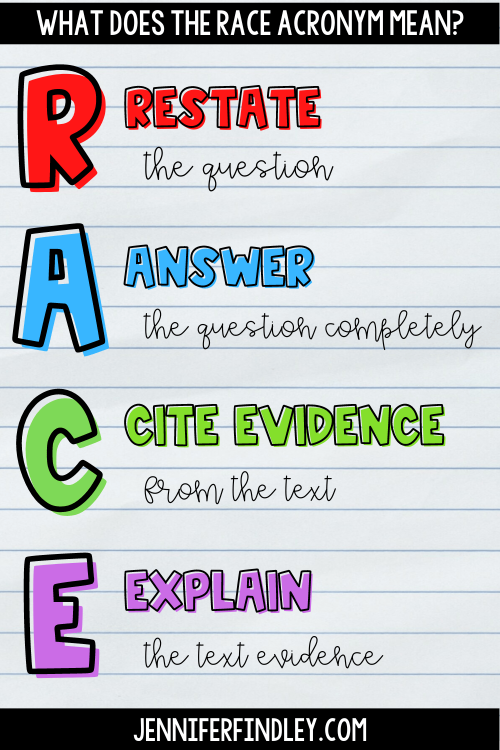
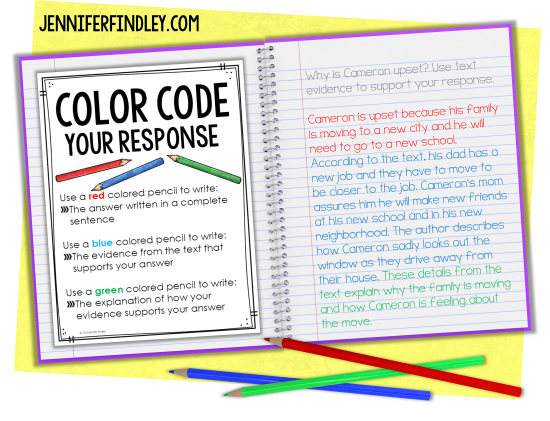

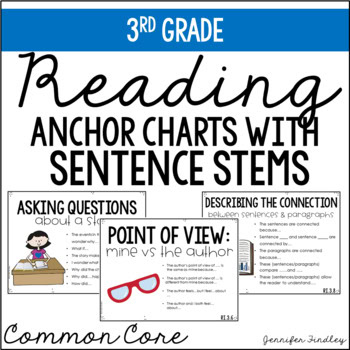

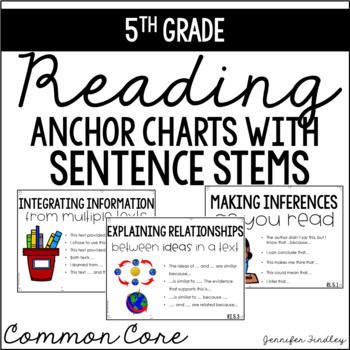
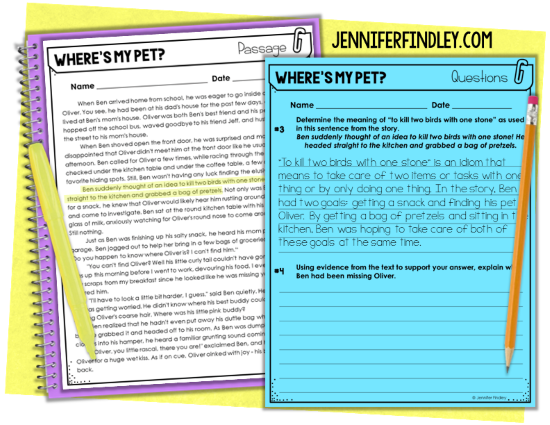
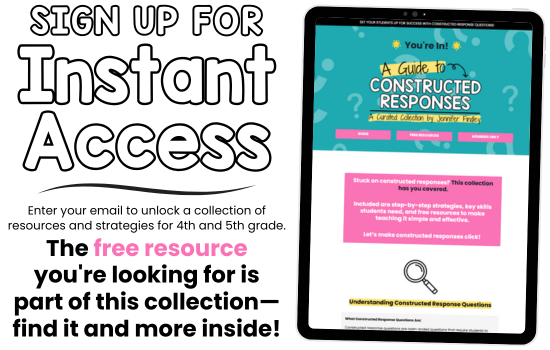
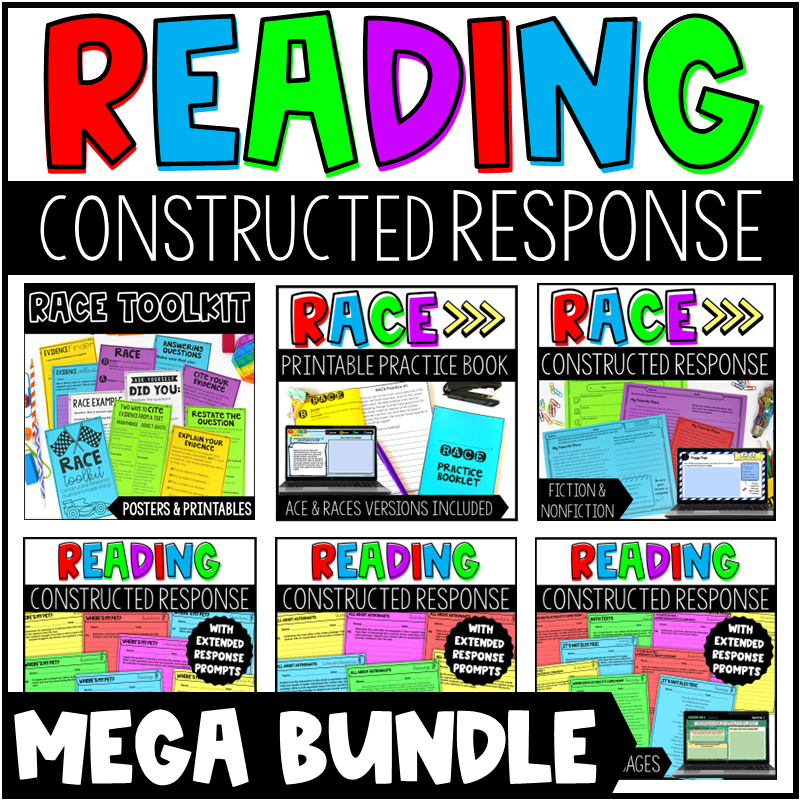







thanks! this was helpful 🙂
Excellent list, such helpful ideas! Thank you for sharing your expertise!
Great ideas
These are awesome resources. Unfortunately the link for the sentence stem posters for the Common Core Reading Standards takes you to a division resource.
Thank you for the GREAT strategies! Plan to use them to help my students enhance their reading!